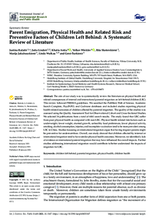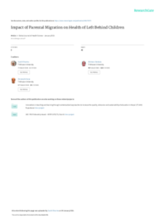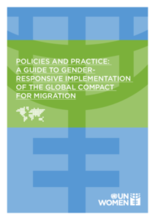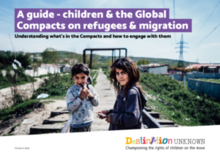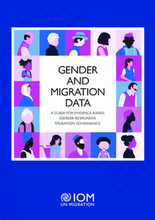Displaying 151 - 160 of 835
The aim of this study was to systematically review the literature on physical health and related consequences of internal and international parental migration on left-behind children (LBC).
The first webinar, hosted on 27 January 2021, is aimed at health practitioners with the goal of introducing the guidance and helping practitioners understand their role in preventing family separation and supporting unaccompanied and separated children.
This paper explores Lagos private schools as crucial sites of care for children with parents in the diaspora.
This study explores the physical and emotional effects of parental migration on left-behind children in Nepal.
Using three waves of the China Family Panel Studies data collected in 2010, 2012 and 2014, the current study examines the association between parental migration and a number of early childhood development (ECD) outcomes.
The purpose of Policies and Practice: A Guide to Gender-Responsive Implementation of the GCM is to provide clear, concrete and practical guidance to governments and other key stakeholders on gender-responsive implementation of the Global Compact for Safe, Orderly and Regular Migration (GCM). Building on the gender-responsive approach outlined in the guiding principles of the GCM, this guide prioritizes the specific needs, challenges and vulnerable situations of women, girls and gender non-conforming people at all stages of migration due to their increased vulnerabilities to human rights violations and gender-based discrimination. It takes into consideration the multiple and intersecting forms of discrimination they may face while highlighting the positive contributions that they make in countries of origin, transit, and destination.
This guide analyses the Global Compact for Safe, Orderly and Regular Migration (GCM) and the Global Compact on Refugees (GCR) through a child rights lens and outlines the measures foreseen in these documents (the Global Compacts) for the protection of the rights of the child.
This guidance note aims to address the migration data gaps in a manner relevant to all stakeholders, and promotes a whole-of-society approach. It is also meant to help operationalize IOM’s Migration Data Strategy and includes recommendations on enhancing gender indicators and gender-based methods in data production, protection, dissemination and use. The note provides succinct information on the extent to which gender is captured through macrolevel global data sets, along with a discussion of key issues relevant to gender and migration data.
The purpose of this empirical study is to investigate the perceived difficulties and outcomes of young adults with a left behind background.
This brief article from UNICEF describes UNICEF's work with partners in Côte d’Ivoire to assist children on the move during the COVID-19 pandemic, "providing them with psychosocial support through counselling and drama therapy, as well as access to education, shelter, meals, clean water and sanitation facilities. UNICEF also works with partners to help reunite children on the move with their families."

